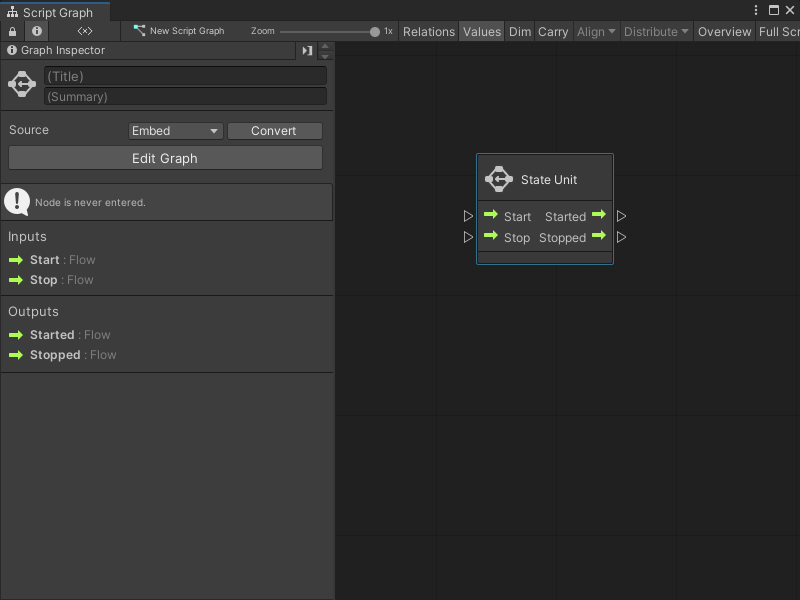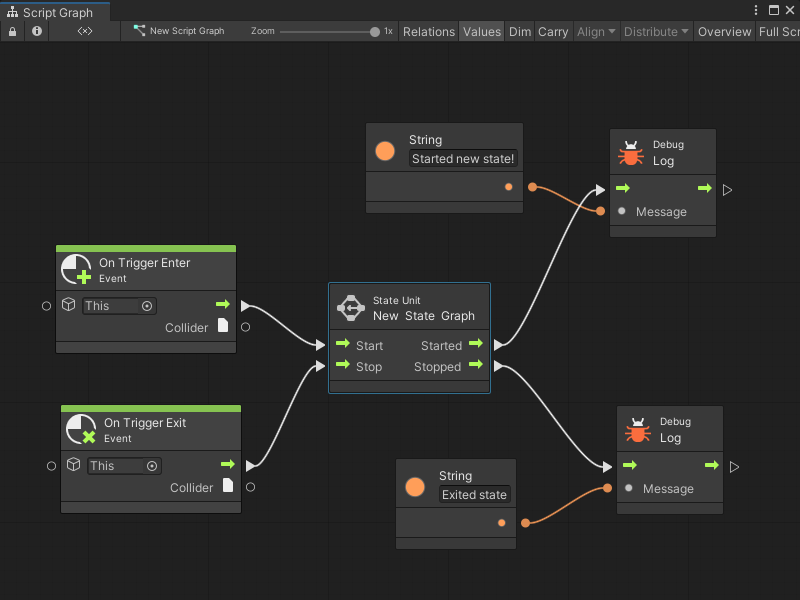3.6 KiB
State Unit node
Use a State Unit node like a Subgraph. The node references and triggers a State Graph inside a Script Graph.
A State Unit node:
- Can't send or receive any data from ports.
- Can only trigger its associated State Graph or other nodes inside its parent Script Graph.
- Can't change its number or type of ports.
For more information on Subgraphs and State Units, see Subgraphs and State Units. For more information on State Graphs and Script Graphs, see Graphs.
Fuzzy finder category
The State Unit node is in the Nesting category in the fuzzy finder.
You can go to the Graphs category and select any State Graph to create a State Unit node. For more information on how to create a State Unit node, see Add a State Unit to a Script Graph.
Inputs
The State Unit [!includenodes-inputs]
| Name | Type | Description |
|---|---|---|
| Start | Input Trigger | The first execution Input Trigger for the node. The connection made to this port indicates when Visual Scripting runs the nested State Graph. Visual Scripting makes all states marked as Start States in the State Graph active. |
| Stop | Input Trigger | The second execution Input Trigger for the node. The connection made to this port indicates when Visual Scripting stops the nested State Graph. Visual Scripting makes all states and transitions in the State Graph inactive. |
Outputs
The State Unit [!includenodes-outputs]
| Name | Type | Description |
|---|---|---|
| Started | Output Trigger | The first execution Output Trigger for the node. The connection made to this port indicates what Visual Scripting runs after the nested State Graph starts. |
| Stopped | Output Trigger | The second execution Output Trigger for the node. The connection made to this port indicates what Visual Scripting runs after the nested State Graph stops. |
Example graph usage
[!TIP] A State Unit node can use a new blank State Graph or an existing State Graph from a project. For more information, see Add a State Unit to a Script Graph.
In the following example, a State Unit node triggers when the Script Graph's GameObject enters a specific Collider marked as a trigger. After the State Unit node starts, the Script Graph uses a Debug Log node to log Started new state! to the console. When the GameObject leaves the Collider, the State Unit node stops, and the Script Graph uses another Debug Log node to log Exited state to the console.

